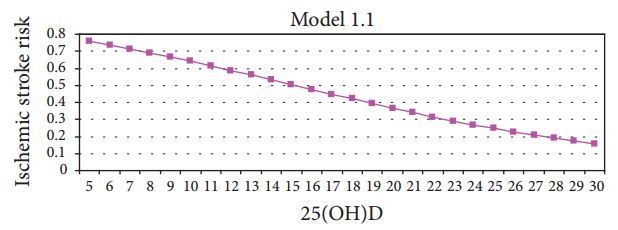Ischemic Stroke risk best predicted by Vitamin D, including PTH improves the prediction
Parathyroid Hormone Levels in the Prediction of Ischemic Stroke Risk.
Dis Markers. 2017;2017:4343171. doi: 10.1155/2017/4343171. Epub 2017 Jan 2.
Çelik G1, Doğan A2, Dener Ş3, Öztürk Ş4, Kulaksızoğlu S5, Ekmekçi H4.
1Beyhekim State Hospital, Department of Neurology, Konya, Turkey.
2Bandırma State Hospital, Department of Neurology, Balıkesir, Turkey.
3Department of Neurology, Başkent University, Konya Training and Research Hospital, Konya, Turkey.
4Department of Neurology, Selçuk Medical Faculty, Selçuk University, Konya, Turkey.
5Department of Biochemistry, Başkent University, Konya Training and Research Hospital, Konya, Turkey.
📄 Download the PDF from VitaminDWiki

Objective. It was examined whether PTH and 25-dihydroxyvitamin D (25(OH)D) levels, together or separately, are indicators of the risk of stroke.
Materials and Methods. This prospective study was performed at two centers. In the study, 100 patients diagnosed with acute ischemic stroke and 100 control individuals in the same age range were examined. In addition to neurological examination, cranial imaging, extensive routine blood chemistry, PTH, and 25(OH)D levels were evaluated in all cases. Stroke risk factors were determined. Logistic regression was used for statistical analysis.
Results. A total of 60 patients and 79 control individuals were included in the study. Different estimation models were designed in order to examine the relationship between PTH and 25(OH)D levels with stroke. According to modeling results, it was determined that the most effective predictor for risk of stroke was 25(OH)D levels, followed by hypertension and PTH levels, respectively.
Conclusion. PTH and 25(OH)D levels together can make important contributions to determination of stroke risk, and further investigations are needed to understand this relationship more fully.
PMID: 28115793 PMCID: PMC5237770 DOI: 10.1155/2017/4343171
